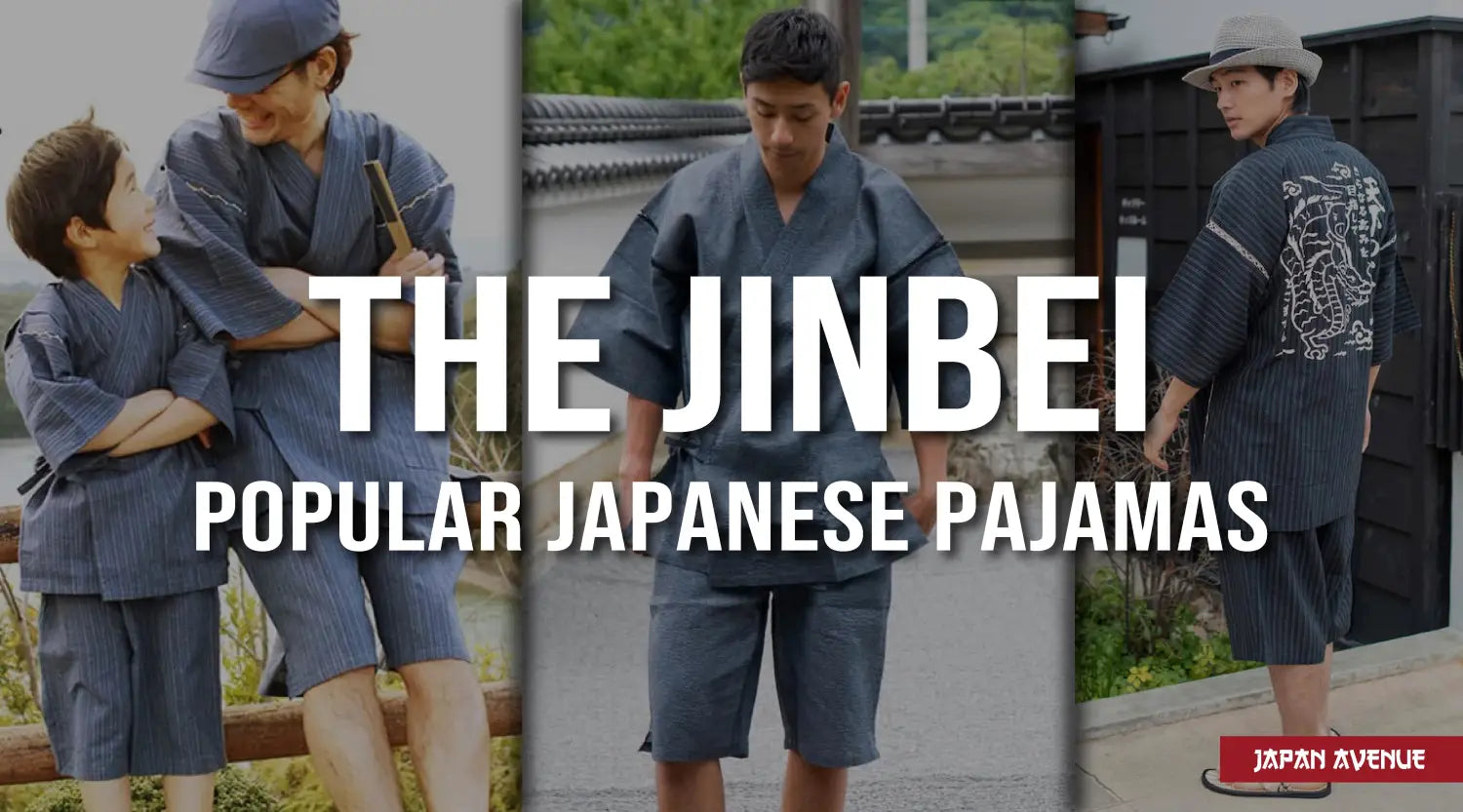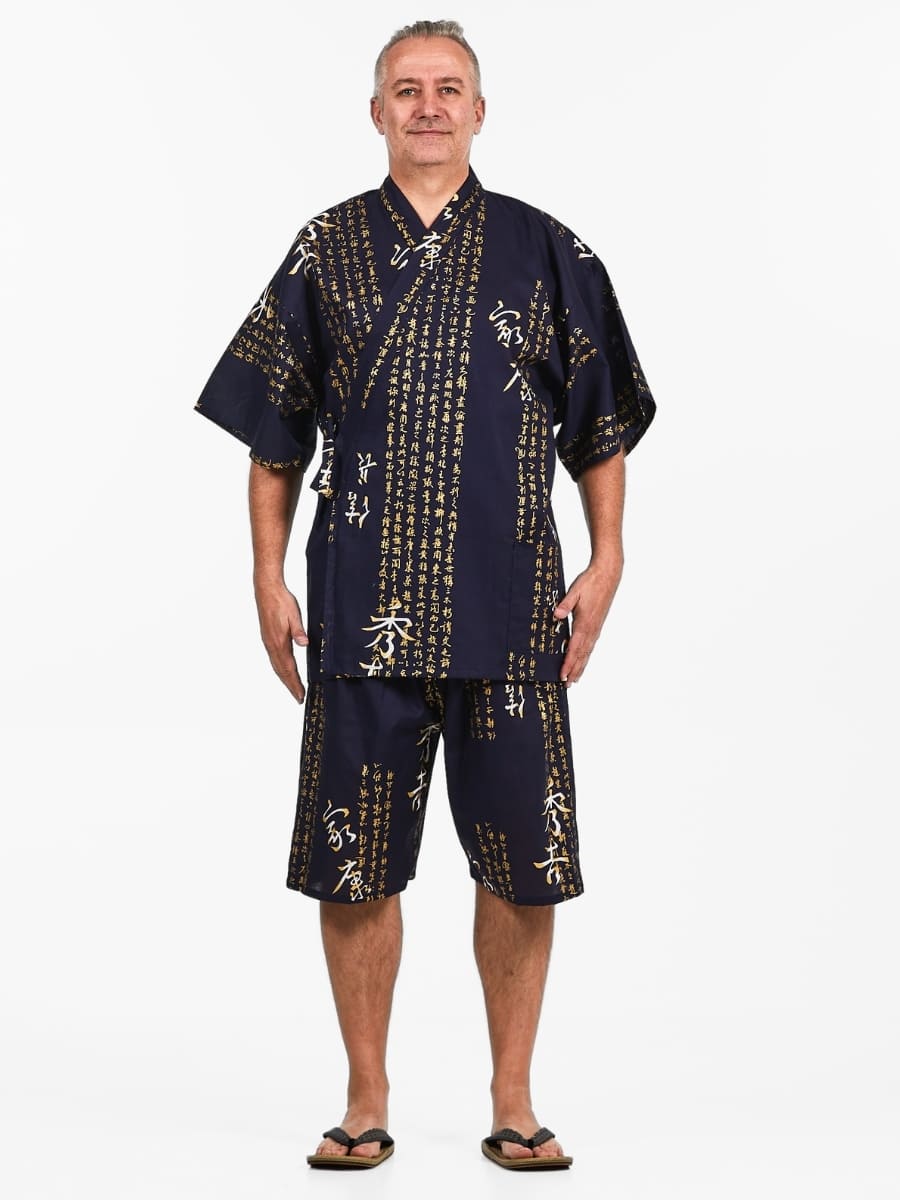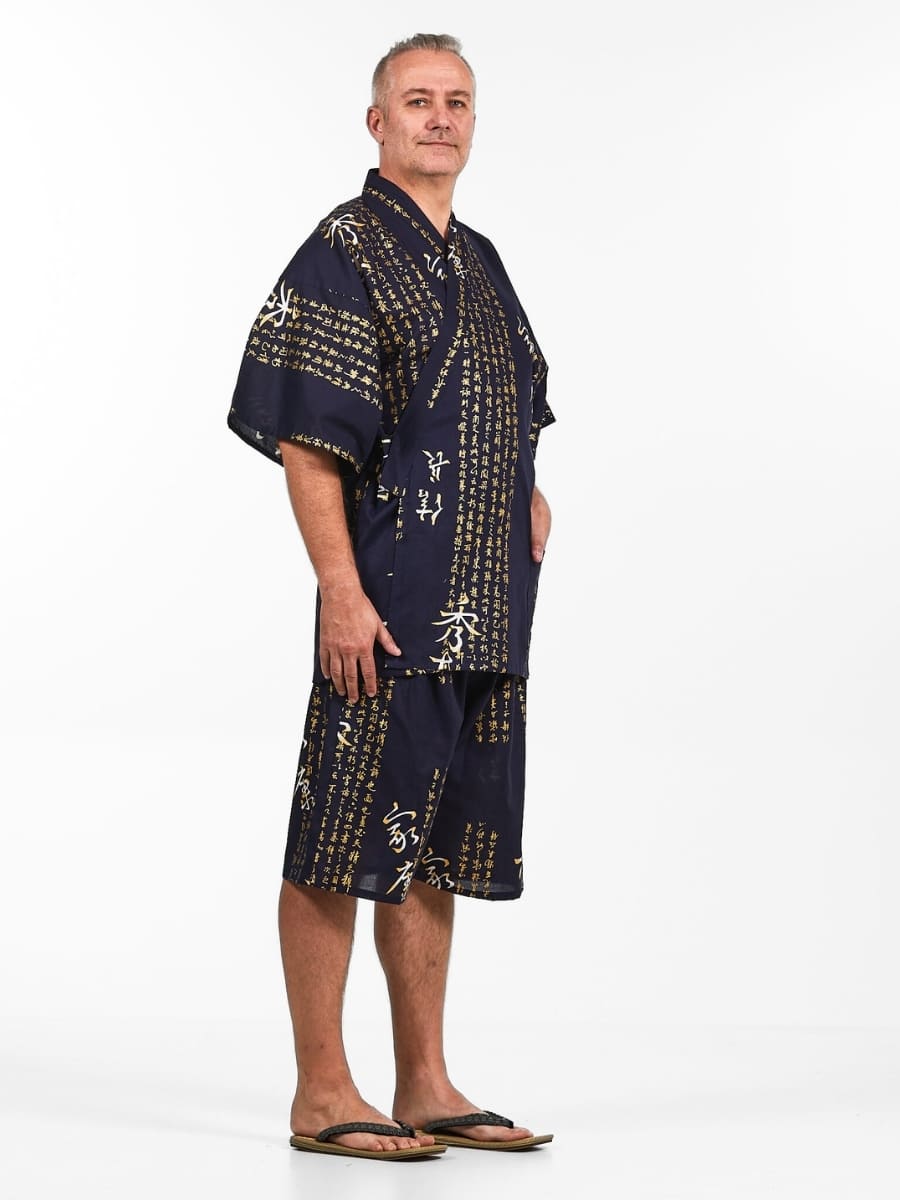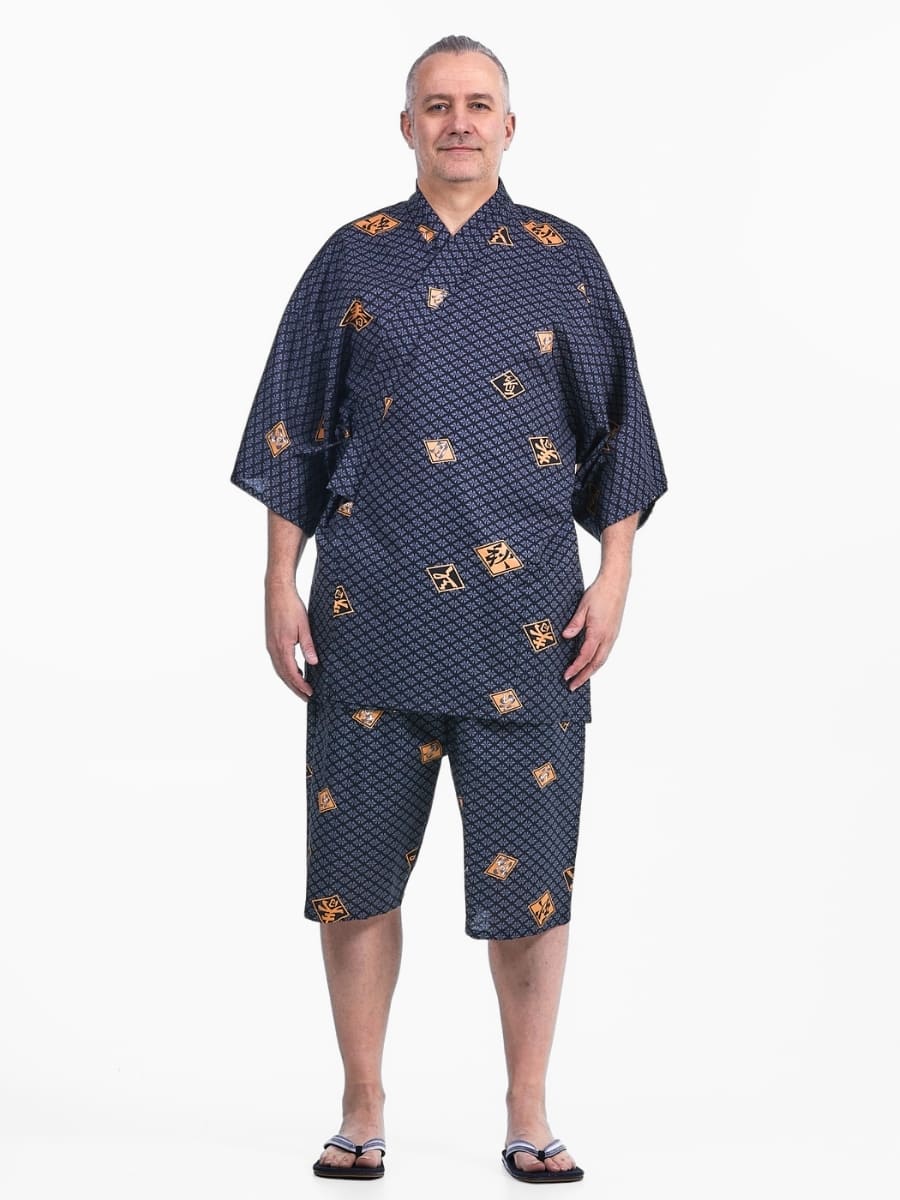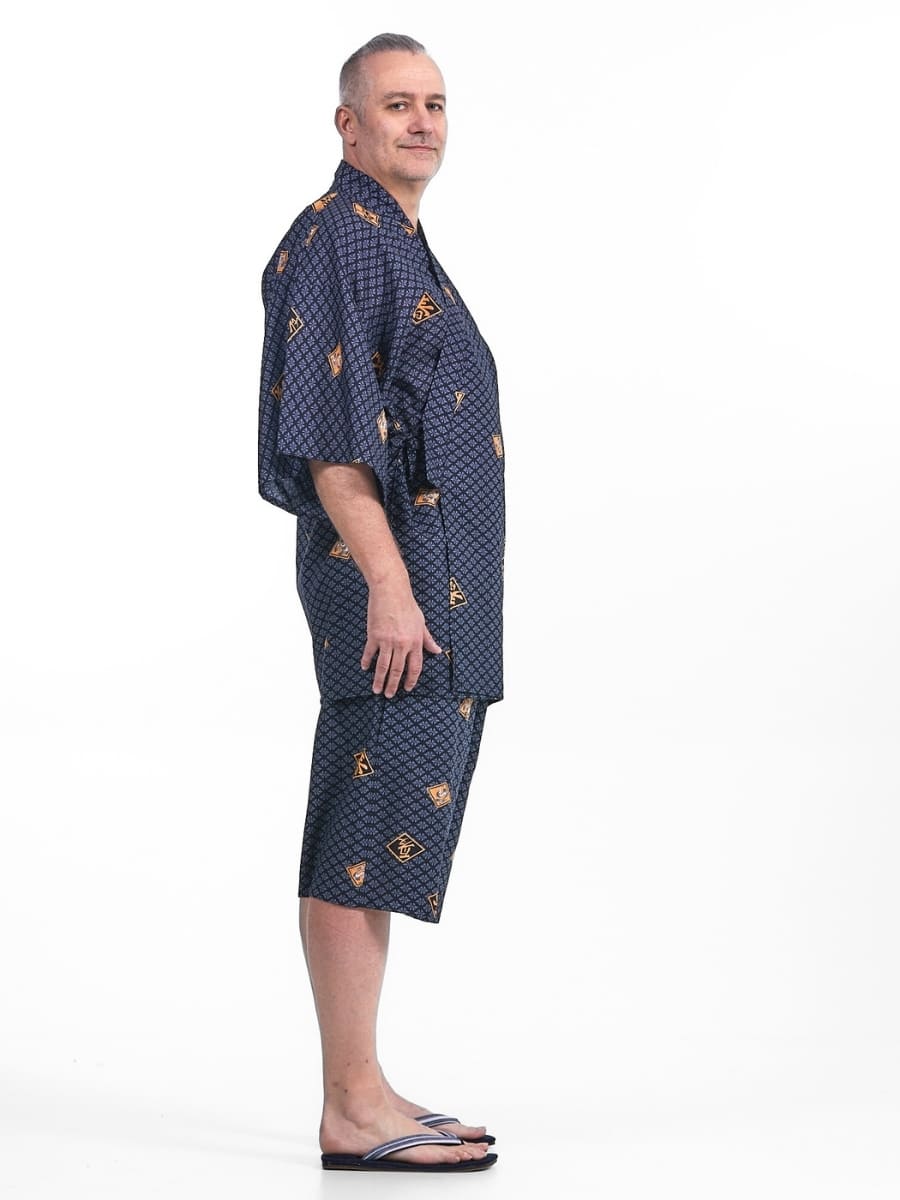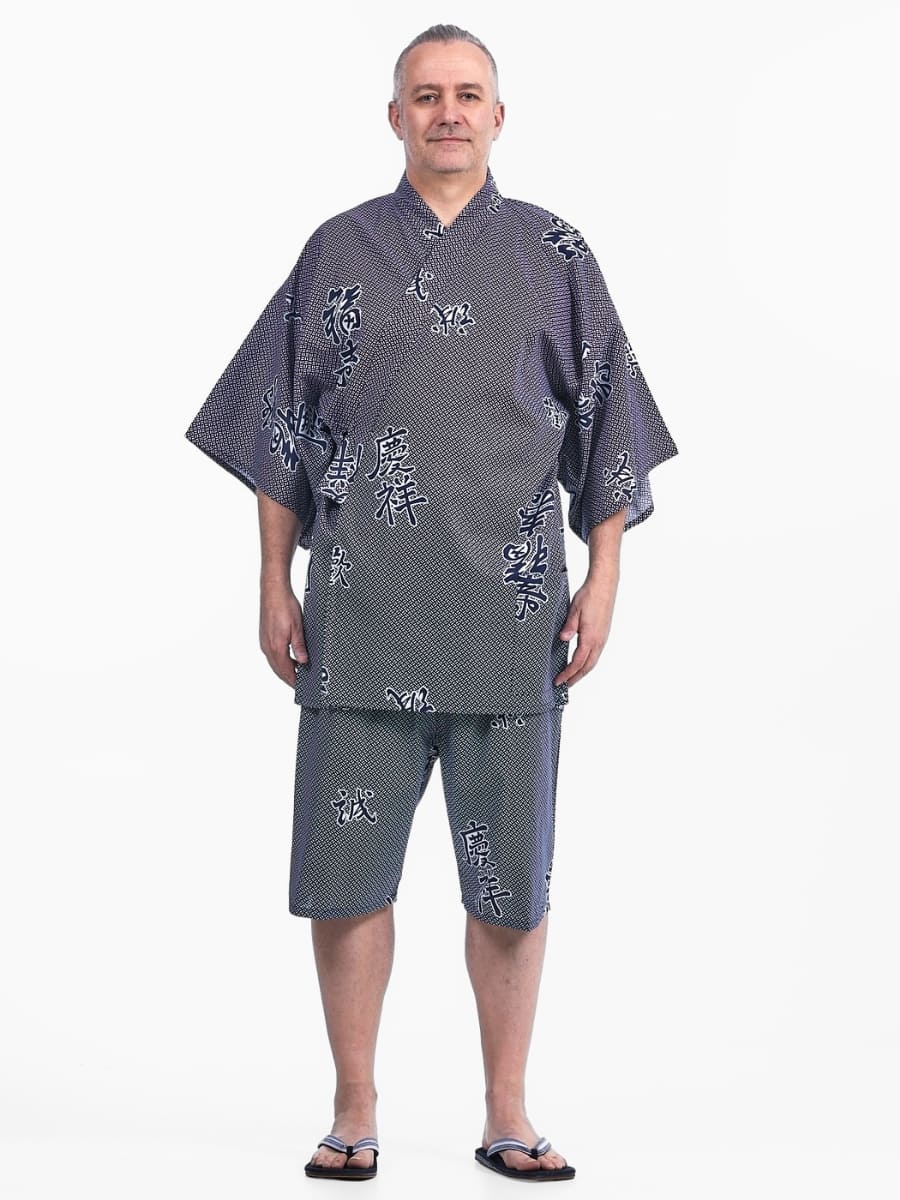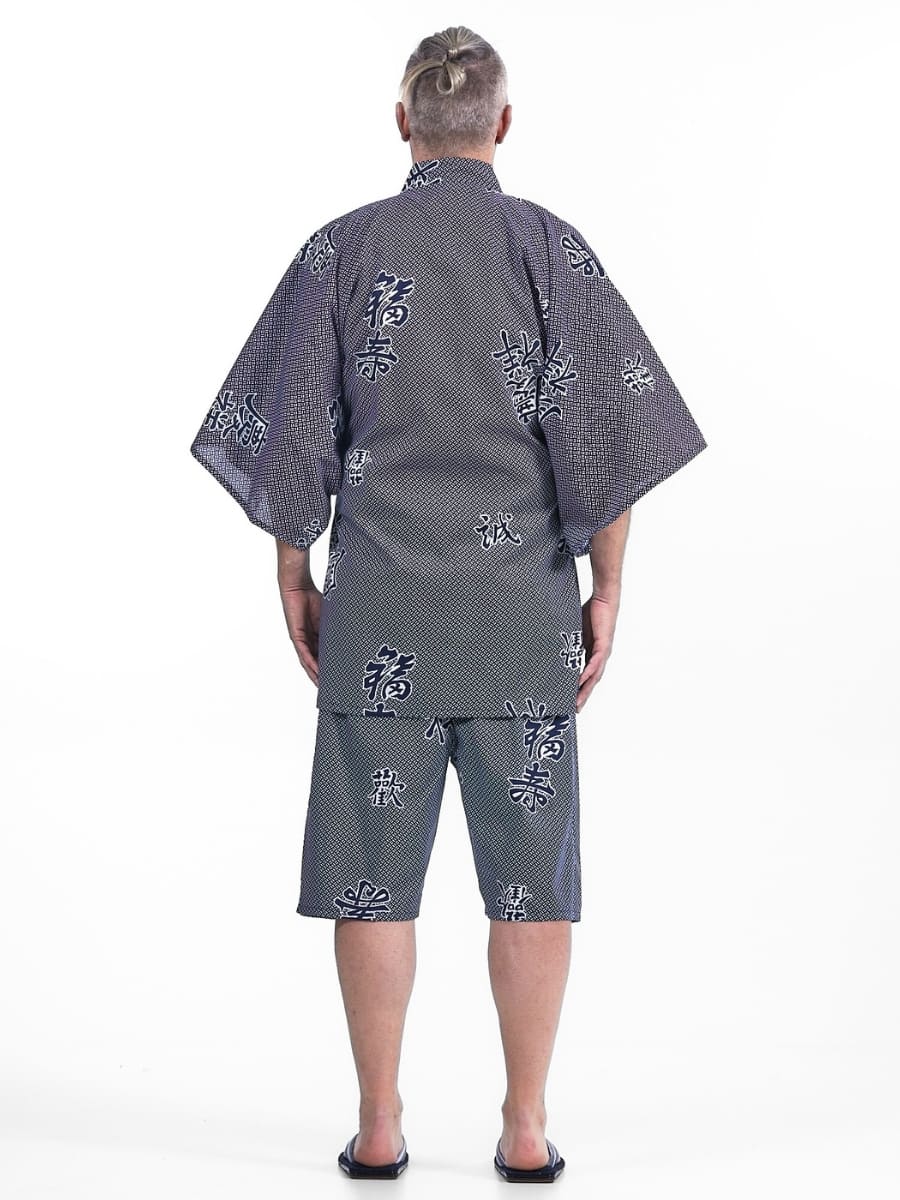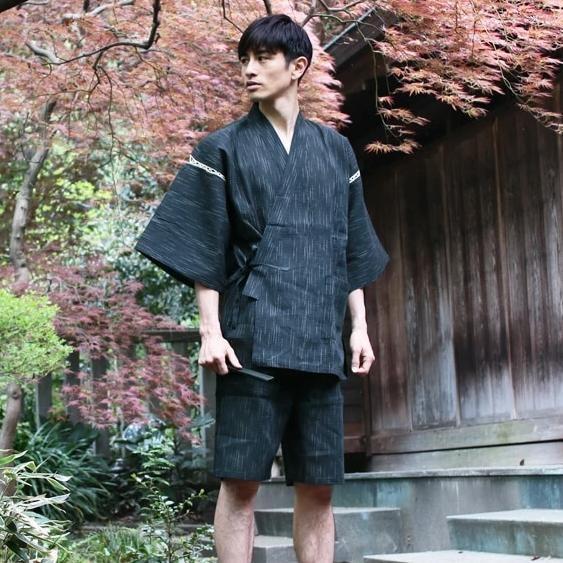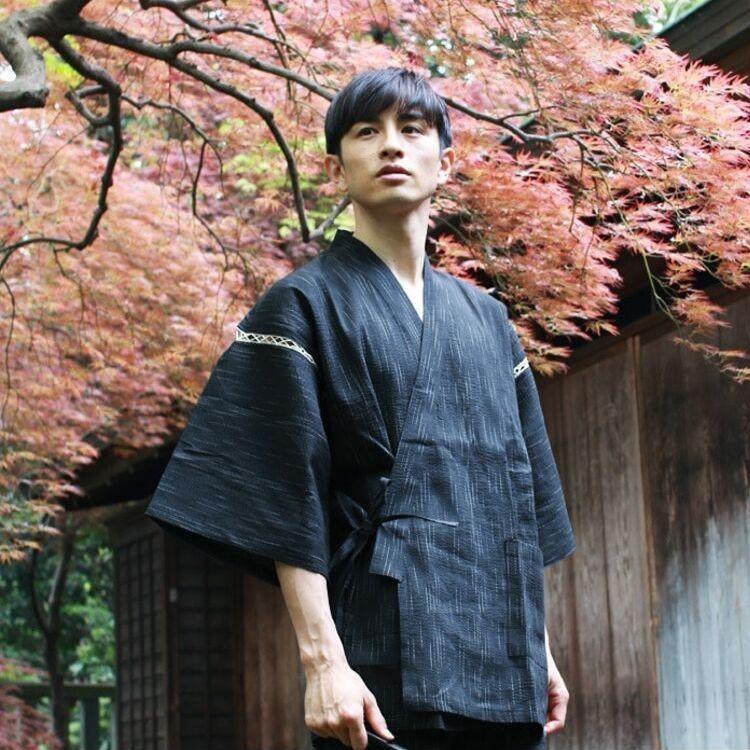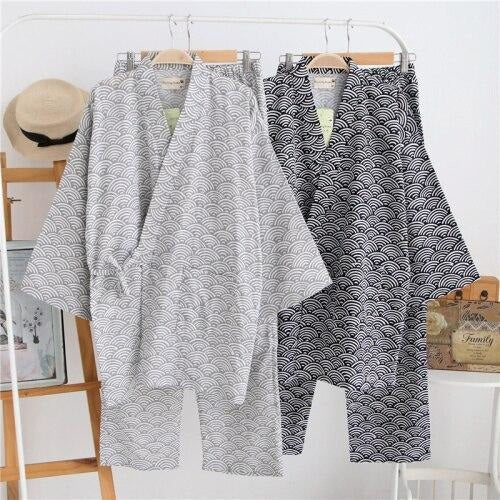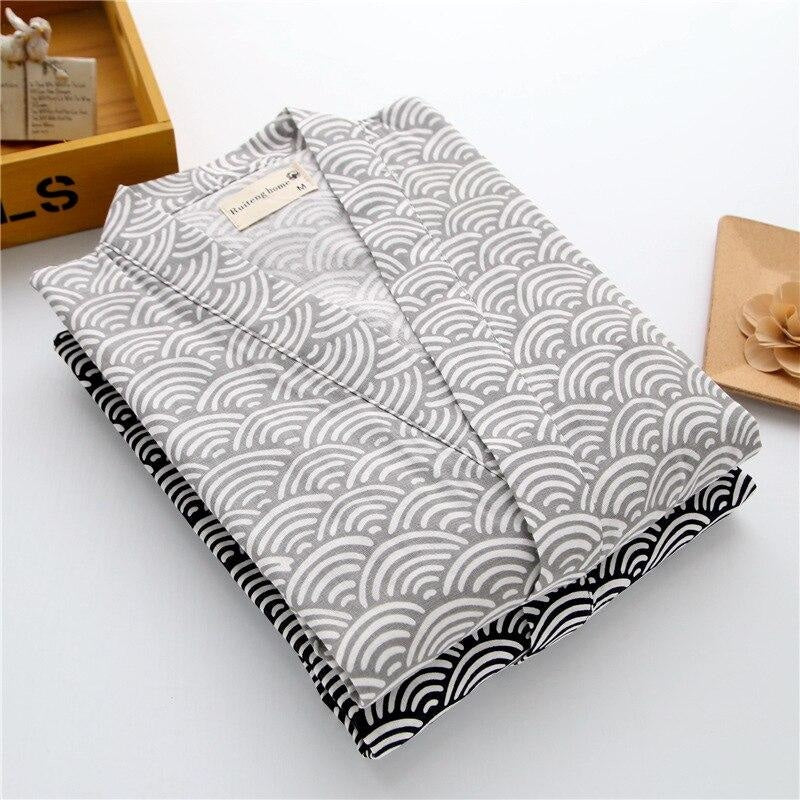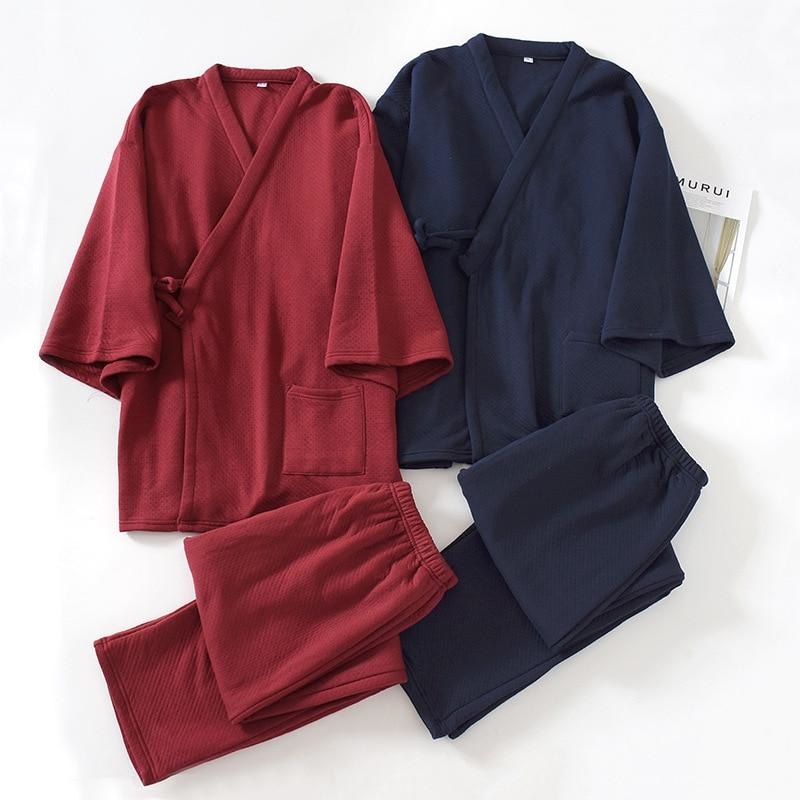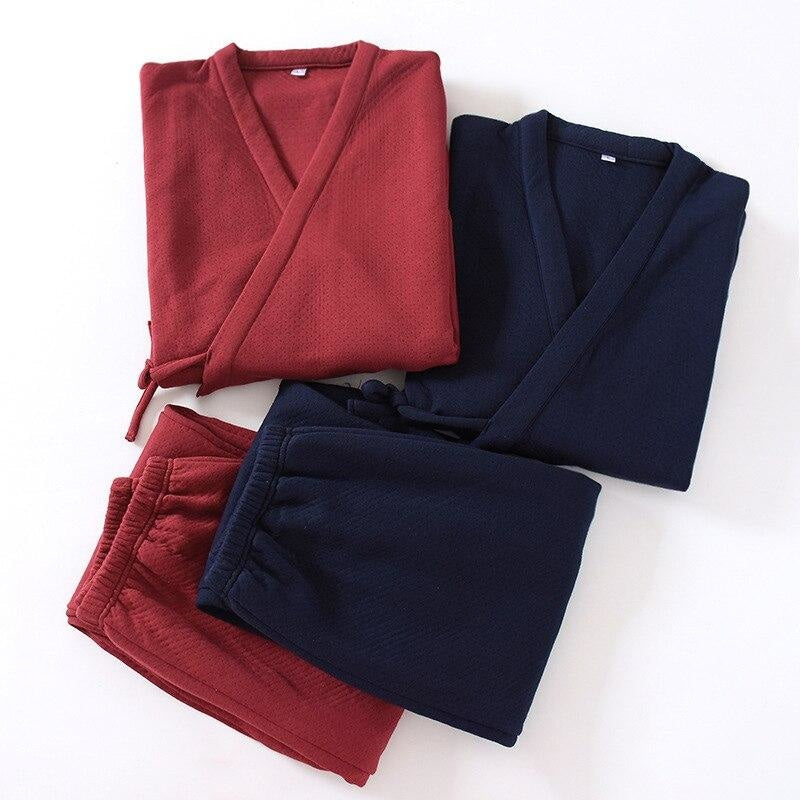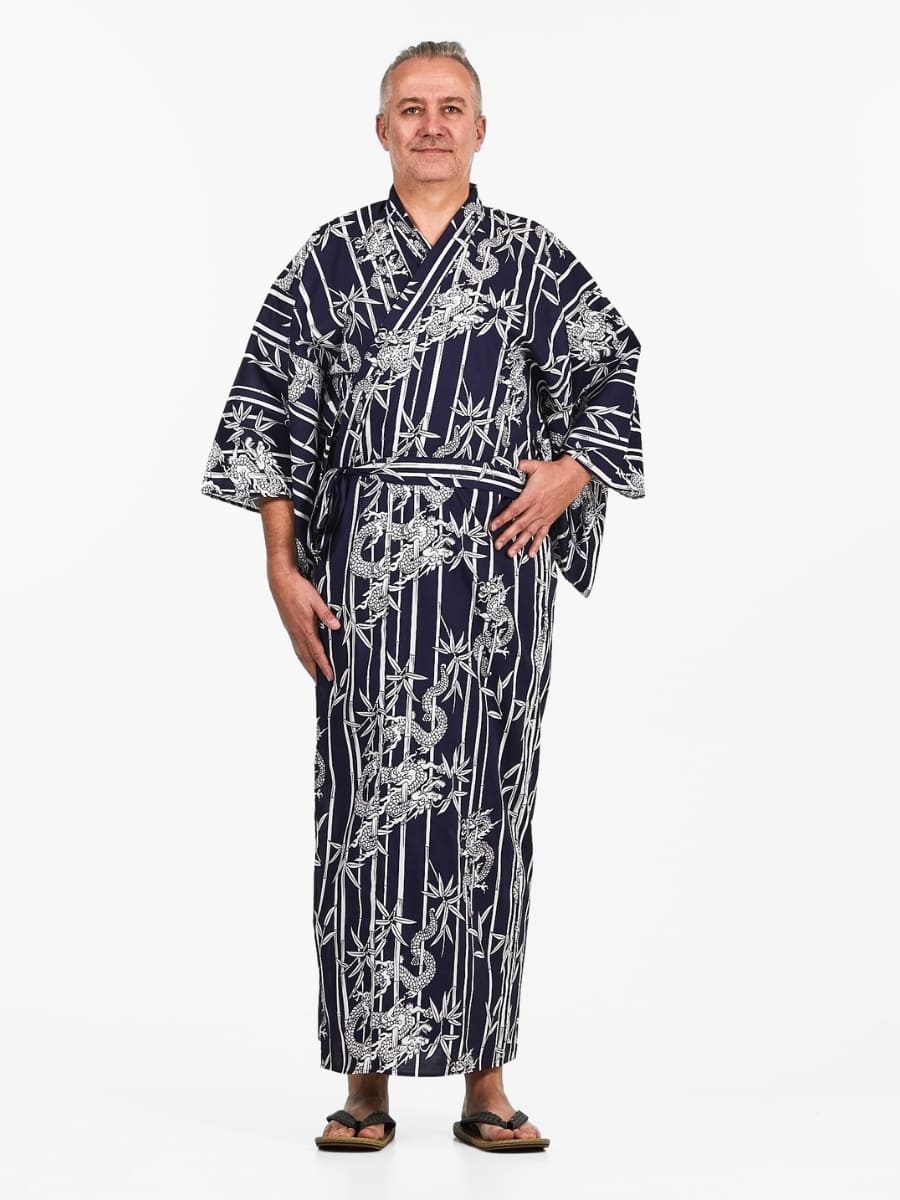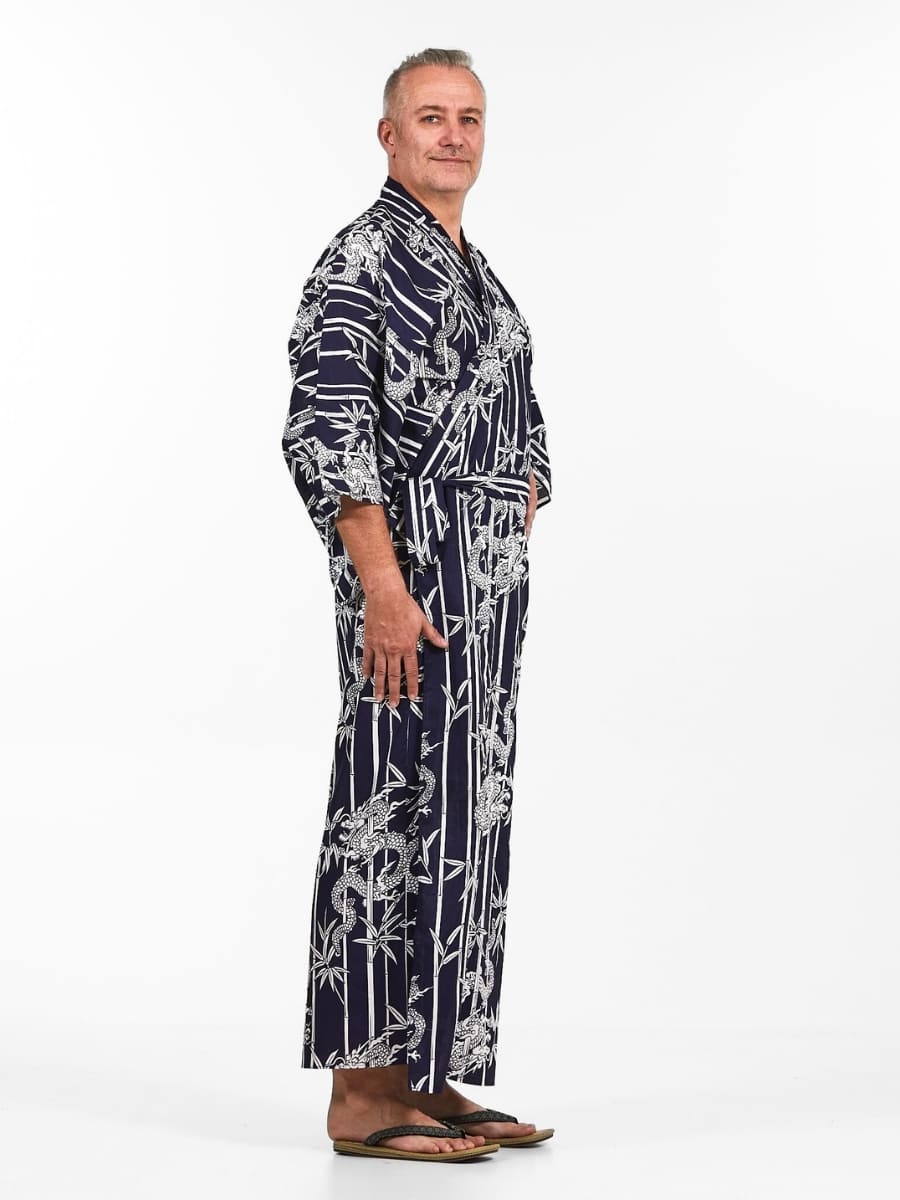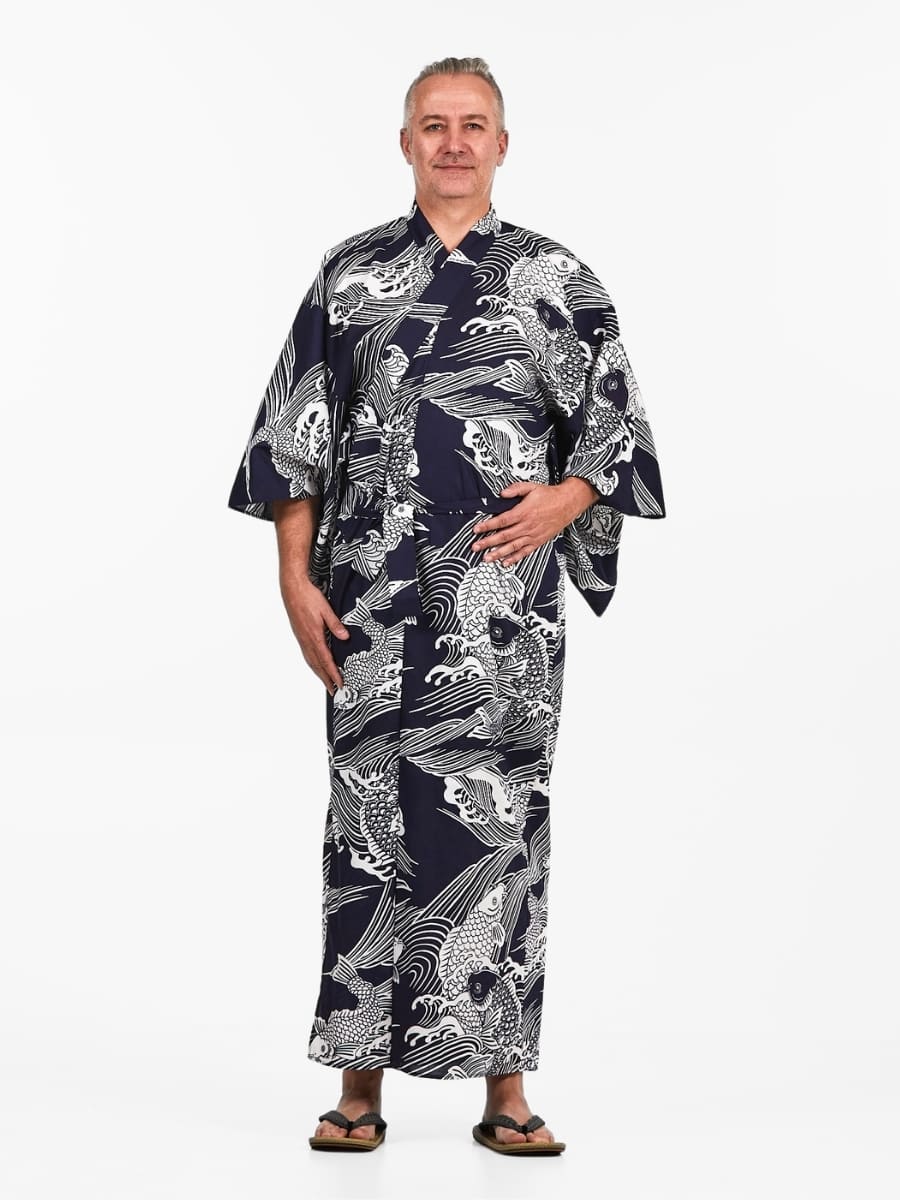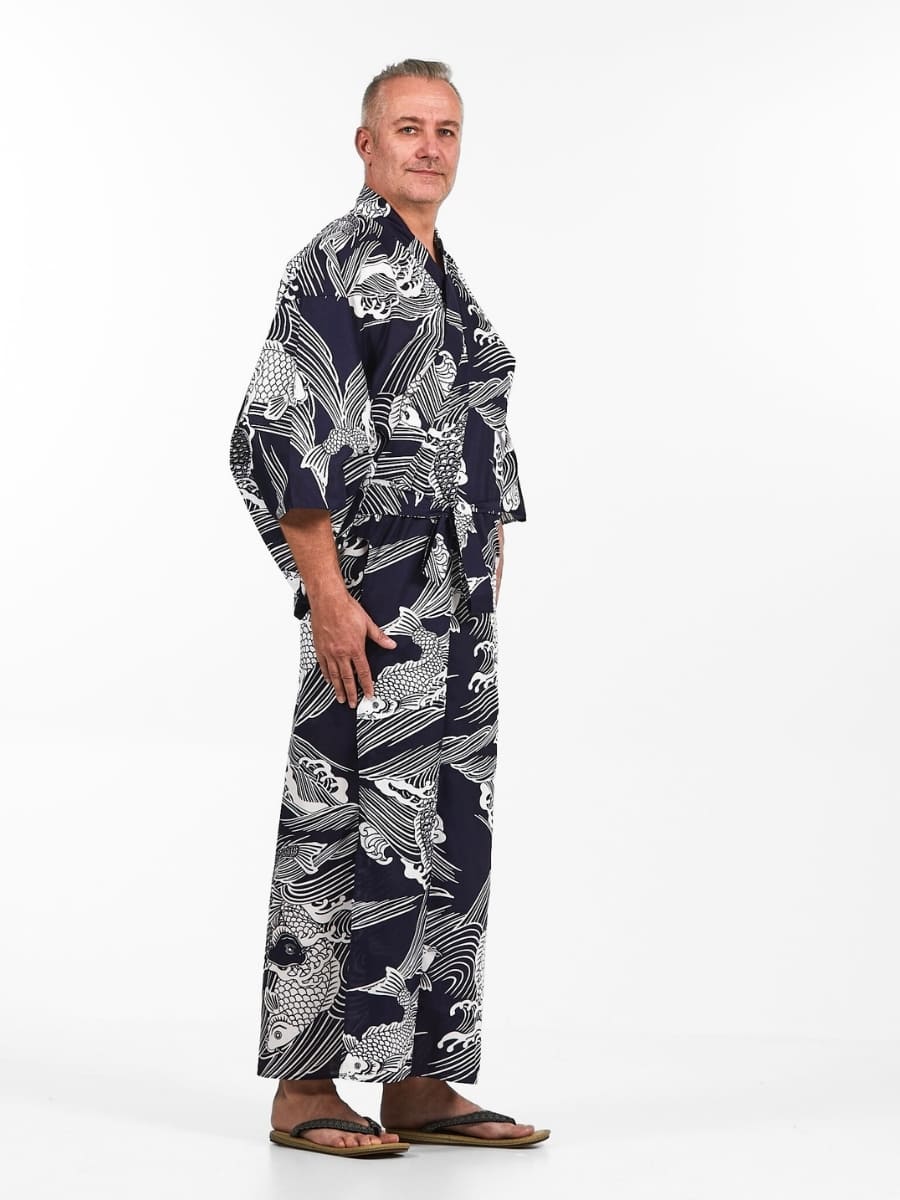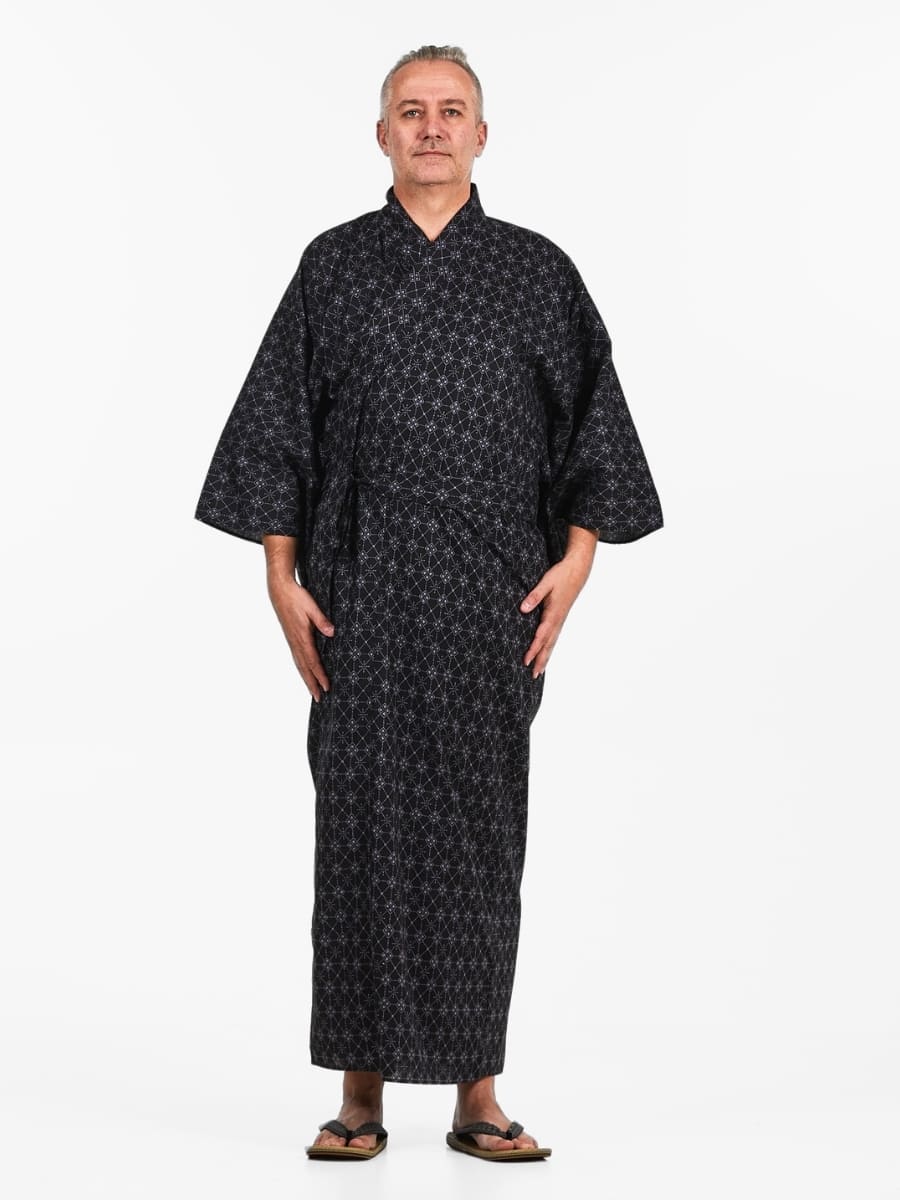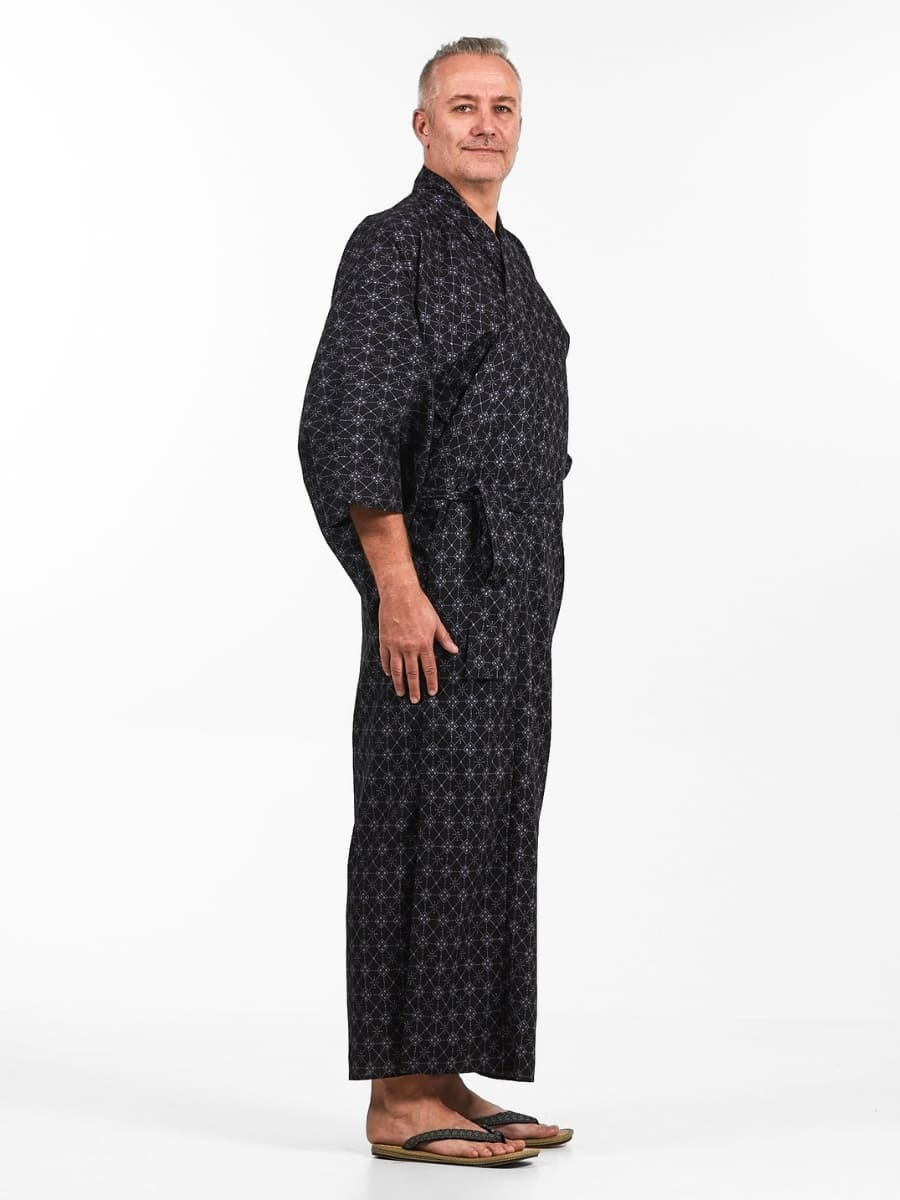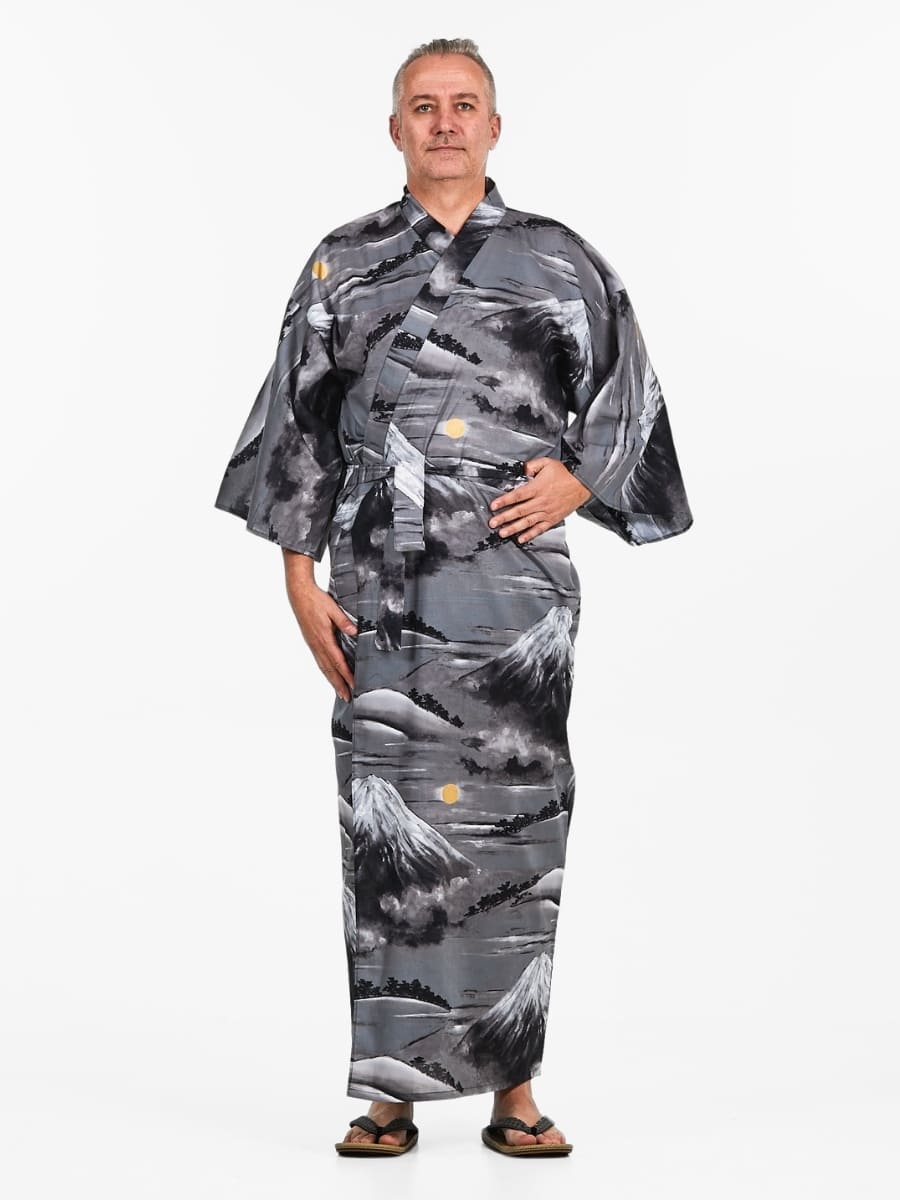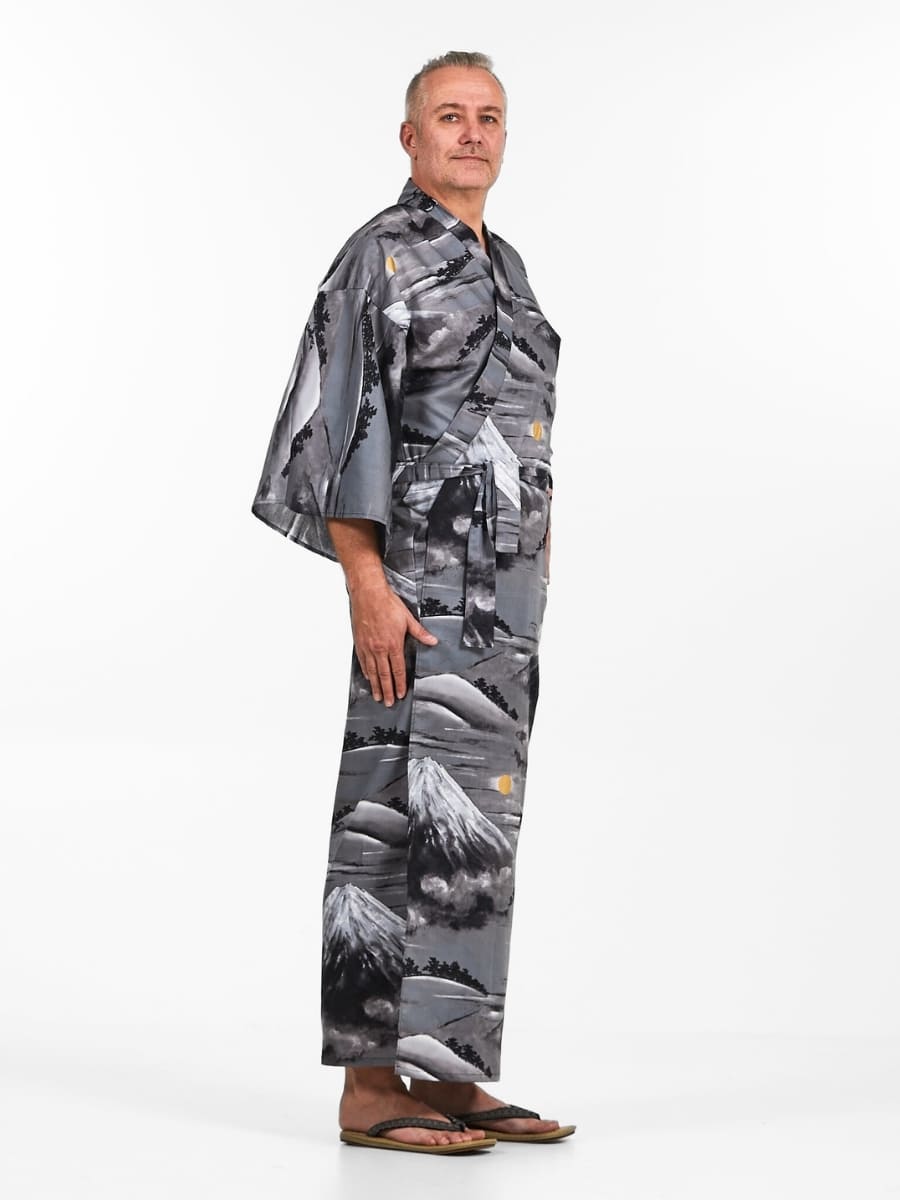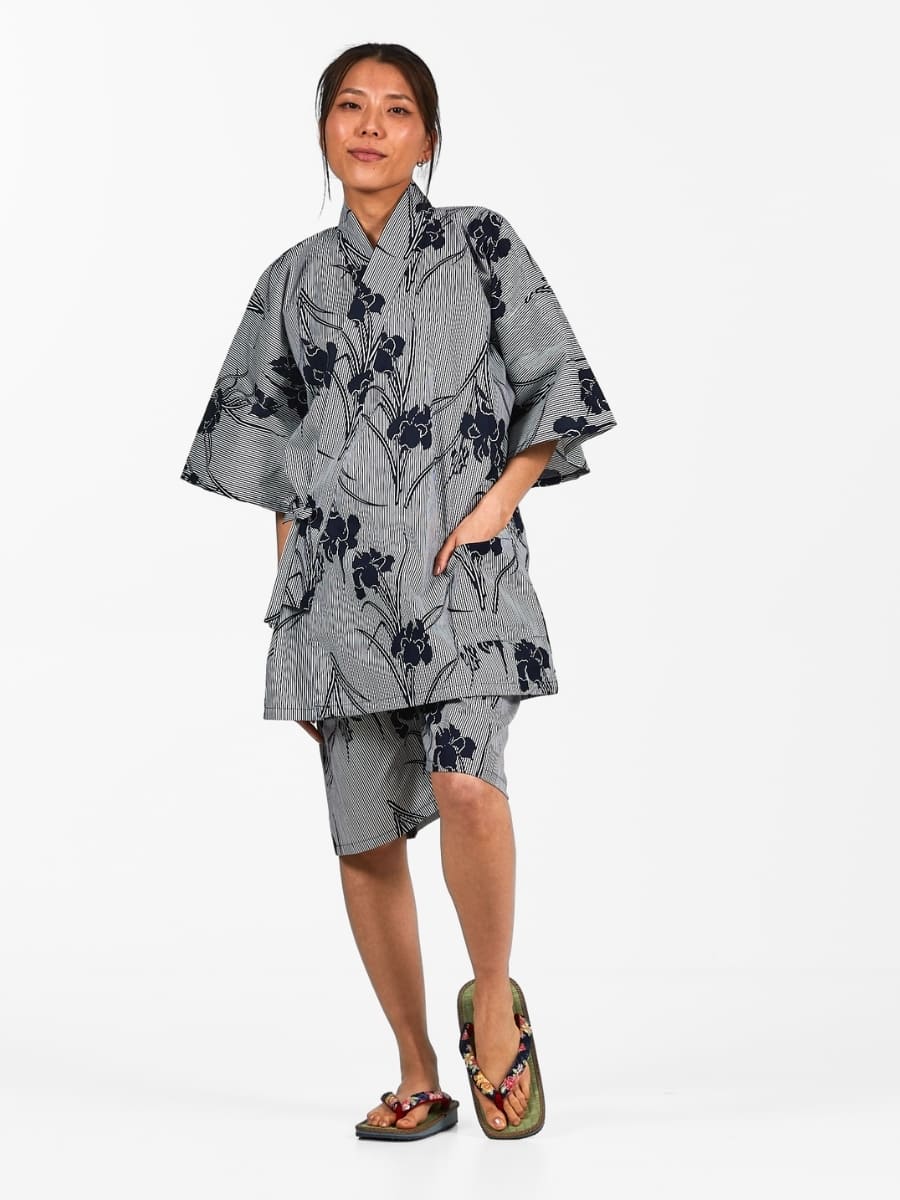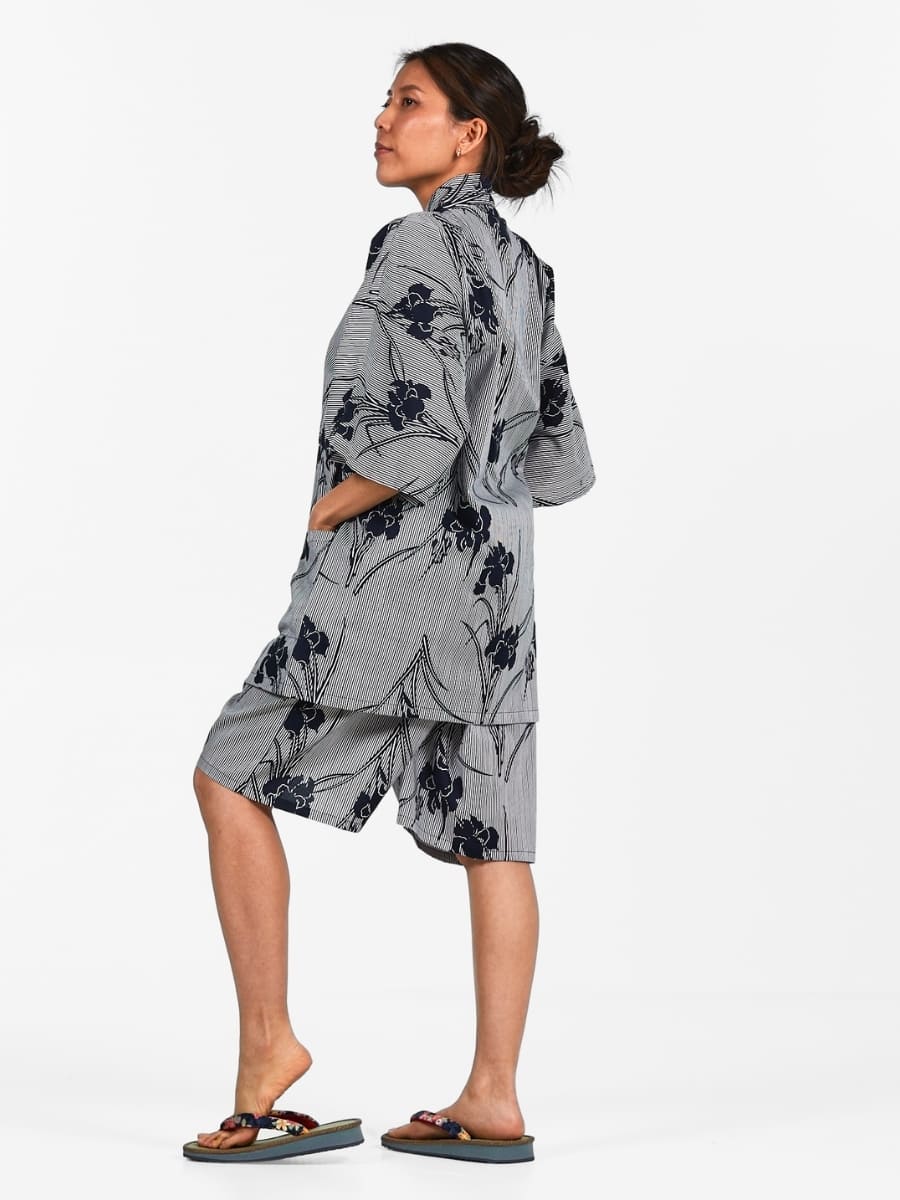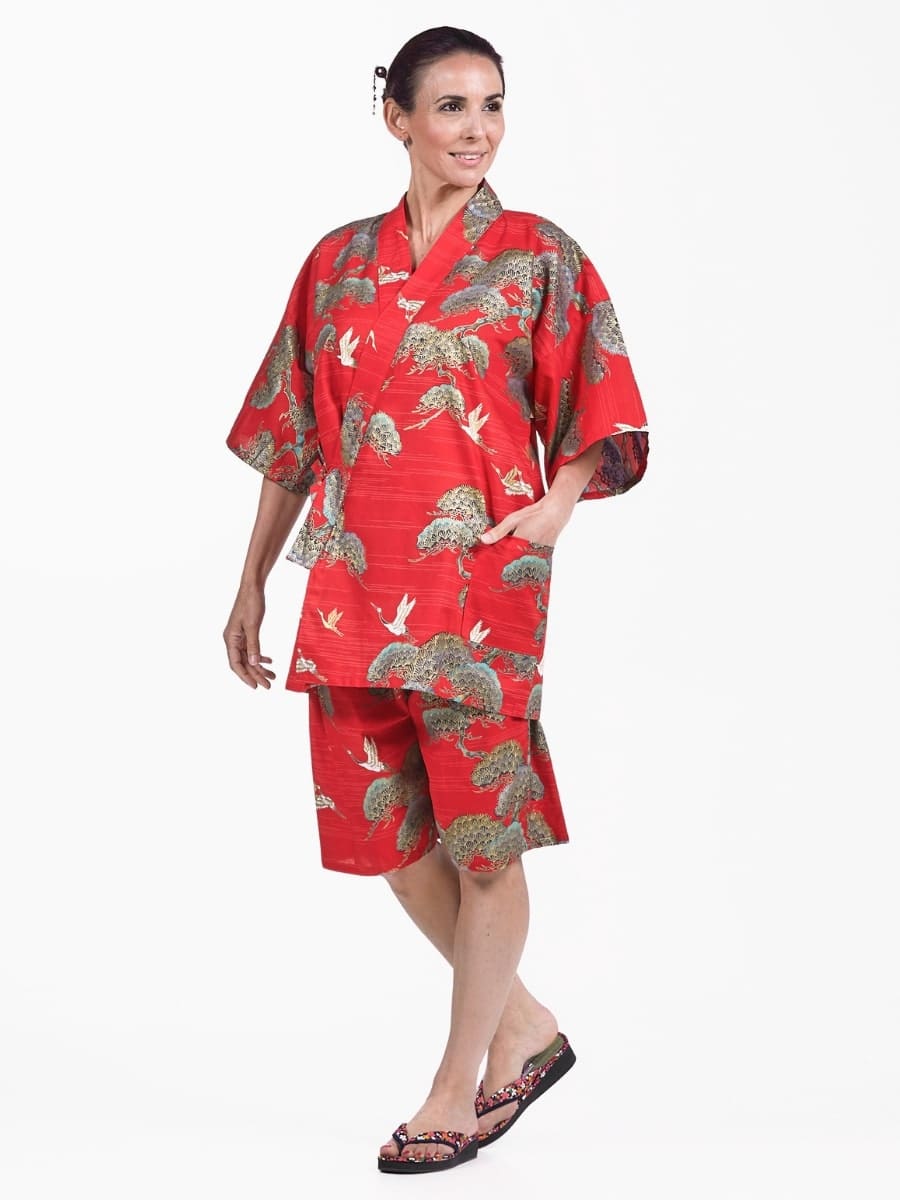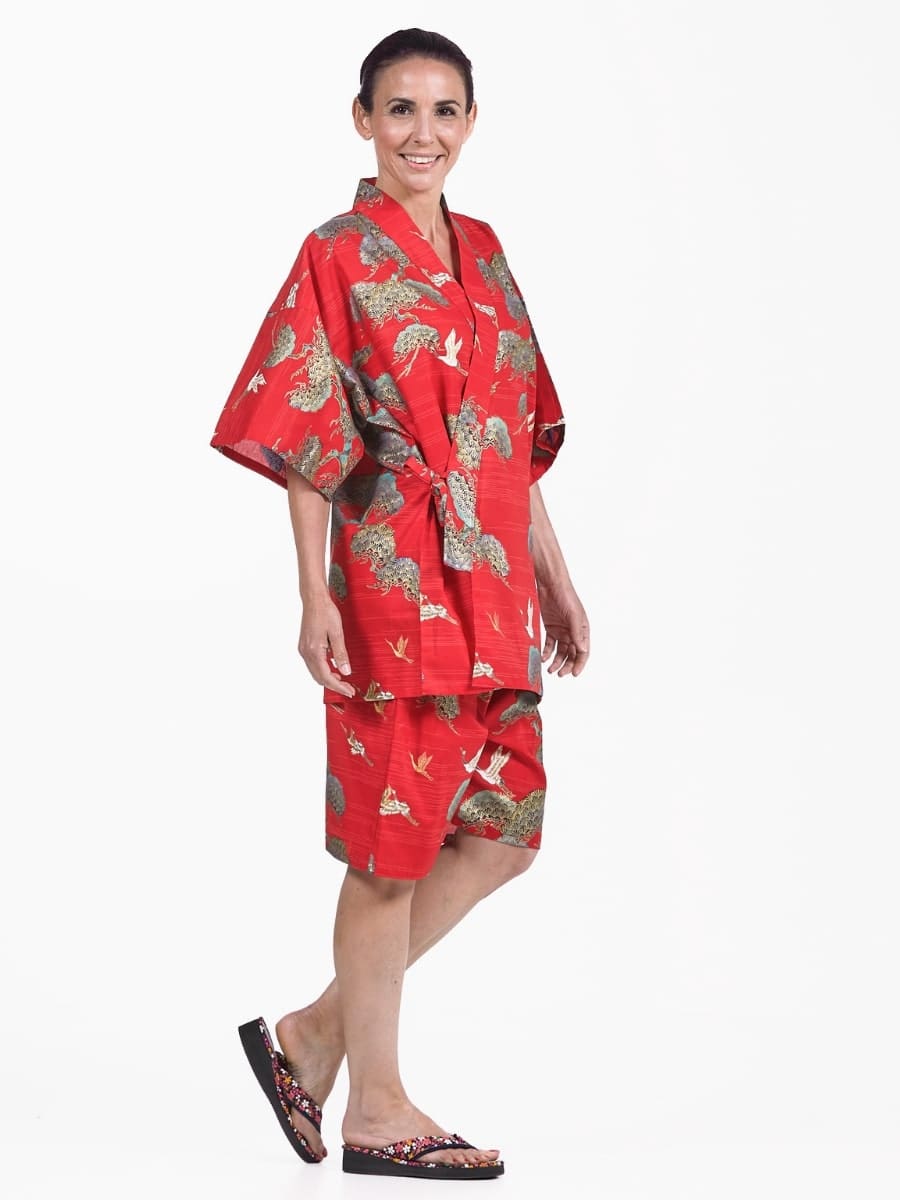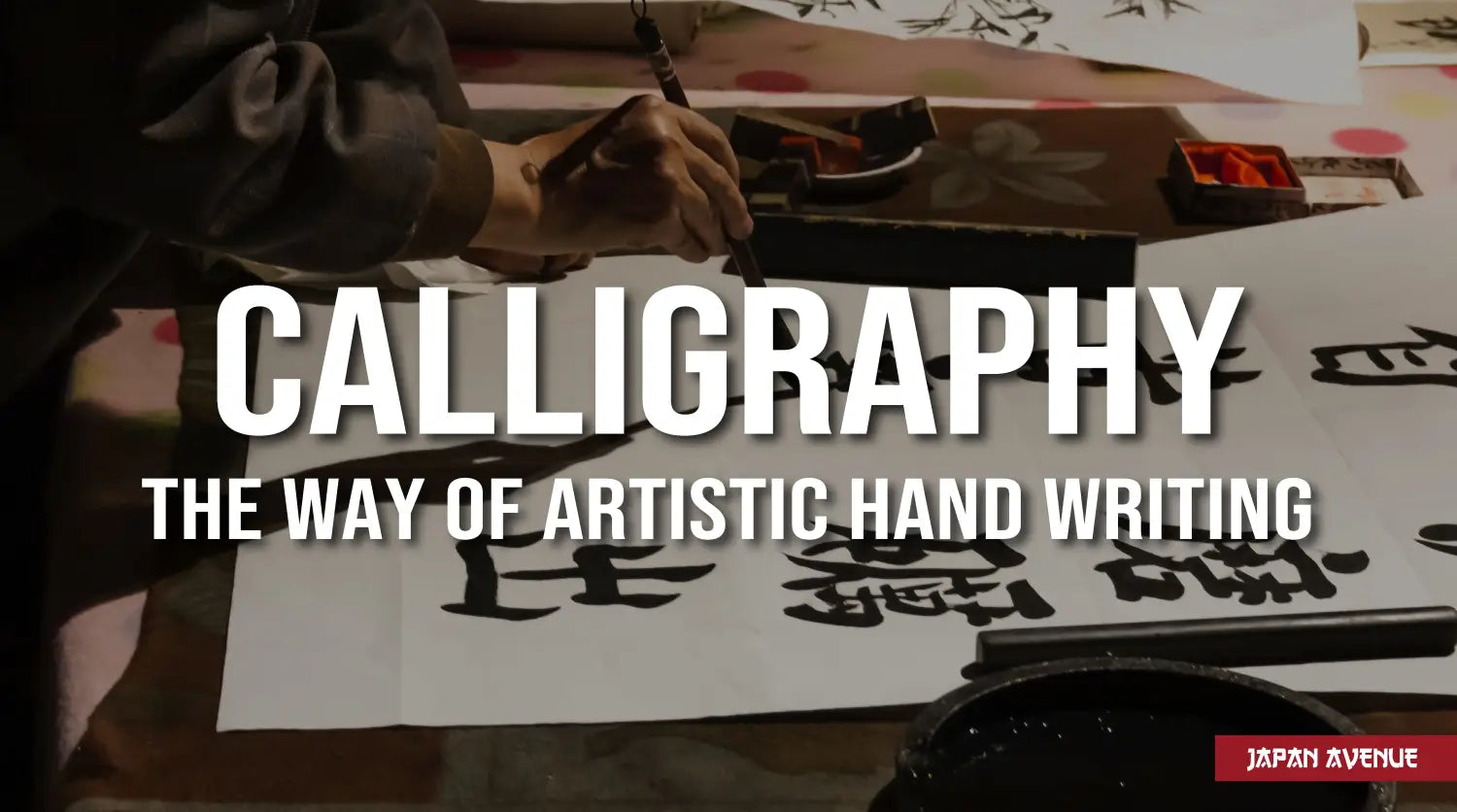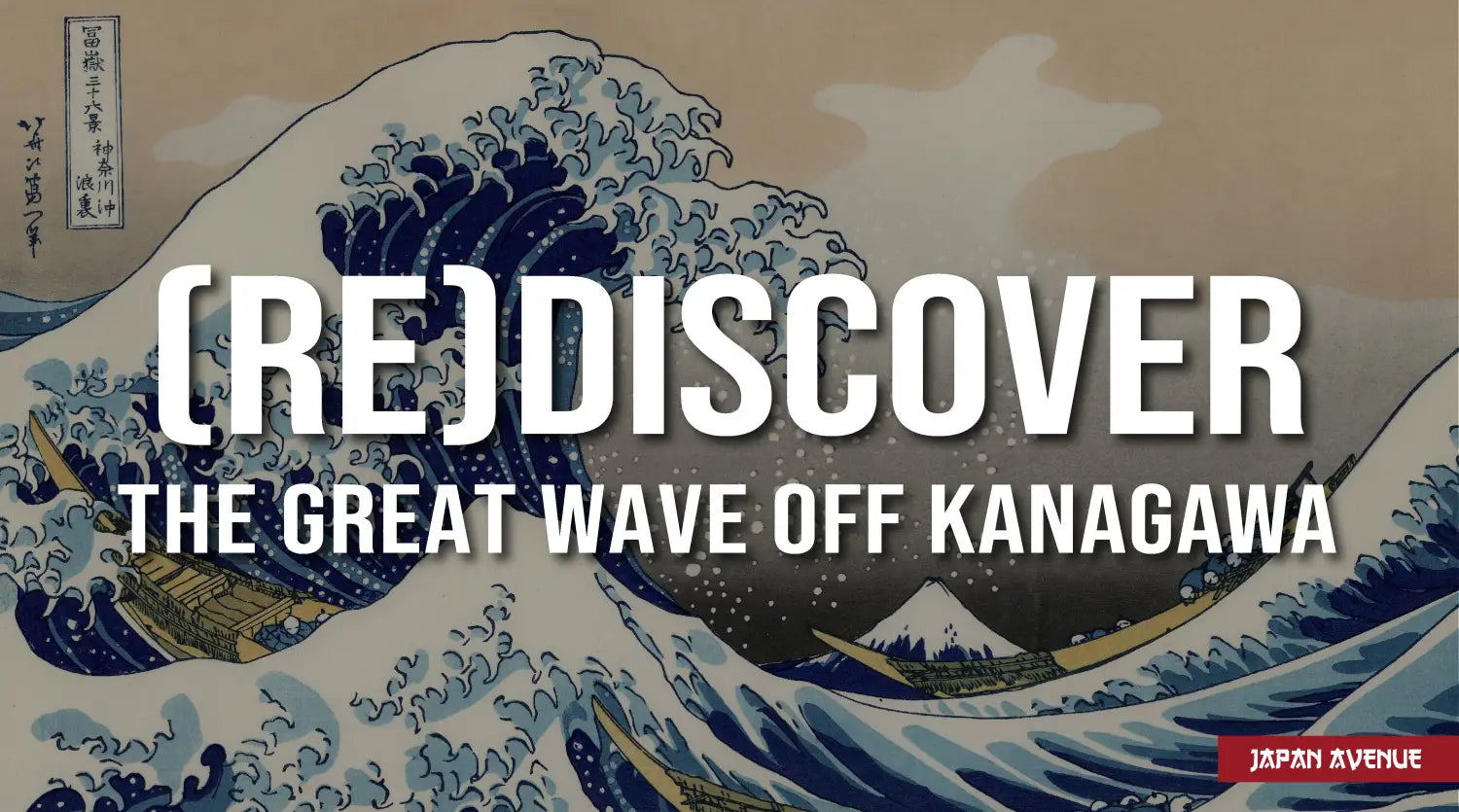Do you know about the jinbei? Besides the famous character in the manga One Piece, this mysterious name also refers to a very popular casual outfit in Japan.
The jinbei is a traditional Japanese garment consisting of a short-sleeved jacket and cotton shorts. A lightweight and comfortable outfit that is suitable for the whole family. Jinbei can be worn at home or outside and are particularly appropriate in hot weather.
But what is a jinbei? How to wear it? Where to buy it? Let's focus on this casual outfit that refuses to be shelved in the ash heap of history.
🤔 What is a jinbei?
Also called jinbē or "hipari", the Jinbei is a Japanese summer garment. Japan addicts may know that traditional Japanese clothing or wafuku is seasonally appropriate and there are many possibilities to choose from: kimono, haori, hanten, happi, samue, yukata and jinbei...
The Japanese jinbei was originally an outfit worn by men at home. The top and the short pants are matched and made of the same natural fabric: cotton, linen or hemp. Note that the jinbei outfit also exists with long pants.

The jinbei jacket closes on the side with cords that are tied inside and outside. The left side is always folded over the right side, most likely because the traditional Japanese garment for dressing deceased people is closed the other way round... The sleeves are short and connected to the other sections by a very loose seam in order to allow air to circulate. The traditional hipari is usually of sober color (blue, green, grey, black) and adorned with delicate stripes.
Although the jinbei was once worn mainly by men, its comfort and beauty has caught the attention of women as well. Women's jinbei respect the typical fit, however, they are more colorful and have patterns that are similar to those of the yukata. In addition, you can also find jinbei for kids and even for babies so you can dress the whole family comfortably.
📌 Etymology and origin of the jinbei (甚平)
The etymological analysis of the kanji 甚 and 平 that constitute the word jinbei in Japanese does not provide any valid clues as to its origin. Nevertheless, the term is said to have military roots. In fact, Japanese samurai used to wear jinbee haori or jinbaori (a sleeveless cotton jacket that falls to the hips and that is worn over the kimono). By the way, the term "Jinbee" (甚兵衛) is still used to refer to the common jinbei.

The jinbaori was a military coat sometimes worn by warriors during the Sengoku period (from 1467 to 1615). As it was meant to be worn during a battle, it had to be easy to wear and easy to take off. In addition, it should not hinder movements: unnecessary details and accessories were eliminated. The first jinbees were made according to this samurai garment combined with a pair of matching pants. Thus the outfit was composed of two parts, the top and the bottom: just like our modern day jinbei.
🙋♂️ Where and how to wear the jinbei?
The jinbei is a traditional Japanese clothing meant for relaxing. It is cut and sewn to ensure the breathability of the body and is very comfortable to wear, especially when it is hot. The jinbei is ideal for indoor use, but it is no longer reserved exclusively for sleepwear.
Japanese people won't hesitate to wear it for their outings in the neighborhood, to look for the mail, to go shopping, to eat at the local restaurant or to go to a matsuri (traditional Japanese festival) or a hanabi (Japanese fireworks). And they are absolutely right! Its comfort and elegance fully justify these uses which no longer shock anyone in the archipelago.

The upper part of the jinbei is worn by crossing the two sides just like for the kimono (the most famous Japanese traditional clothing). But unlike the kimono, the jinbei jacket is not fastened with an obi (traditional belt) but with a side knot. As for the pants, they are held in place by an adjustable cord.
The jinbei offers an elegant and casual style. However, if you want to wear it in the Japanese way, avoid wearing it with flip-flops and instead, opt for geta or zori sandals, with or without tabi (socks).
🙋♂️ Where to buy my jinbei?
In Japan, jinbei can be found in all department stores as well as in souvenir stores. Second hand Japanese clothing stores usually sell them as well. It is also possible to rent one for a day.
Knowledge of the Japanese language is no longer required as you can also order your jinbei directly on the internet. Online stores and websites specialized in Japan are making it a star item. In addition to its originality and comfort, its price is very affordable. Check out our jinbei collection, you will surely find the model that suits your taste.
💥 Jinbei vs Yukata: which one to choose?
You fell in love with these two traditional Japanese clothes, but your budget doesn't allow you to buy both wafuku?! Which one to choose?
Well, it depends on many factors such as your mood of the day, your budget (the jinbei is cheaper), your silhouette and the desired look.
Let's take the silhouette as the first criterion of choice. The yukata is made out of one piece of fabric; its straight fit suits most body types and balances V-shaped body types (wide at the top and narrow at the bottom). You'll look elegant, stylish and graceful, but be careful in the way you walk. It's also important to know that the long fit of the yukata tends to compress shorter body types. This problem can easily be solved by wearing wedge sandals or traditional Japanese geta.

As for the jinbei, this type of garment is more suitable for people with a sporty soul or for those who are looking for a casual chic style. The short fit of the jinbei and its vertical stripes will give the impression of being taller. Unlike the yukata, the jinbei allows you to move freely. And lastly, a small detail that makes the difference: you can still wear your favorite sneakers - and it won't look weird!
The common point between the yukata and the jinbei is that they both are rather loose. As a result, overweight and generous curves will not be a hindrance for wearing them.
👌 The modern jinbei
If Japanese businessmen wear suits today, that is because their clothing style has not escaped from the Western influence. However, Japanese people have not given up on their typical clothes (wafuku). Quite the contrary, they are still cherished, successfully exported to the rest of the world and modernized. Just like the jinbei.
Today's jinbei is made out of brighter colored fabrics and adorned with floral motifs or inspired by Japanese folk iconography. The jacket is shorter; the elastic belt and other fancy touches (buttons, zippers) have appeared next to, or instead of, the traditiofnal side knot.
The choice is huge. You will find models for men, women, children and even for babies. The colors and patterns evoke different worlds: from the most discreet to the most festive.
From pajamas to a summer garment
The jinbei is the perfect traditional Japanese garment to face warm summer days and evenings while combining comfort, breathability and relaxation. Japanese and Westerners both love to wear this lightweight garment as pajamas when they are at home. When worn in a modern, casual way, the Jinbei is a stylish piece of clothing that allows people to look good, even when it's hot outside.
True to their legendary skills, the Japanese preserved, modernized and exported the jinbei. It must be said that its many assets have made the task much easier!
To learn more about this topic

